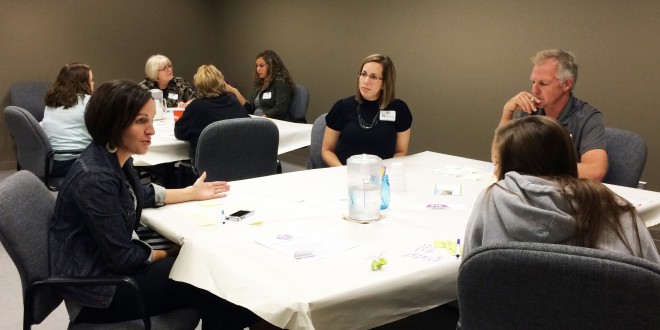The “long game” of connecting with the young people in a community is guiding them into being active citizens someday. But what if the best way to get to that goal is just to give them a great place to grow up?
“Just letting them be kids and giving them a good childhood is what we’re doing right,” said Angie Baszler of DeSmet.
The realization came to Baszler, who recently left the economic development field to pursue a secondary education degree, during the September Prairie Idea Exchange event. A student from Webster talked about someday wanting to move back to that community because young people are so supported there. When their basketball team went to state, adults in the community sent letters, flowers and “lots of support” to the team.
“The community supported them and surrounded them and really looked out for them. She said, ‘I want to live in a community like that,’” Baszler said.
By showing up for students, towns like Webster, and Baszler’s community in DeSmet, build community loyalty.
Often local communities want something from their youth. But Baszler thinks perhaps the town leaders should be asking how the community can serve those young people.
“These students have a lot on their plates,” she said. “They are in school all day long. Then they’re in sports afterward. To find additional time to get involved in the community afterward … what if their involvement revolves around being good students and being in extracurricular activities? How can we support them in that?”
Once those students graduate they might take that good experience out into the world, learn more and bring their experiences back to their town.
The DeSmet guidance counselor recently sent a student to Baszler to discuss the college experience. Baszler told her to go off into the world. Move to a city. Start a career. But bring those experiences back to DeSmet.
“That messaging is hard to get across when students are jumping from science to social studies to math,” she said. “There’s not really an open forum to do that, and I’m not sure community leaders understand that.”
Baszler said changing how adults engage youth is a growth process for adults as well as for young people.
Baszler has initiated a follow-up discussion about youth engagement during one of her subbing jobs, asking students in DeSmet whether they’d move back to town if given the chance. Only 25 percent said yes. The rest claimed there was nothing for kids to do there.
“I find this interesting, because kids in Omaha say there’s nothing for them to do (there),” she said. “I don’t buy that.”
Baszler tried to find out what students did want to do.
They said they’d like “a place to go.” Their parents told stories about dances at a local place when they were in high school. The students wanted the same opportunity to create a place where they could build memories and develop their generation’s identity and experiences.
“They were trusting adults, and saying, ‘We want to have this,’ and, yet, my initial reaction was out of fear that they would behave inappropriately,” she said. “What if (we) said yes? How could our community (give them support and let) them remember that the … people in our town put on a dance for us once a year?”
 Dakotafire Get your spark here.
Dakotafire Get your spark here.



